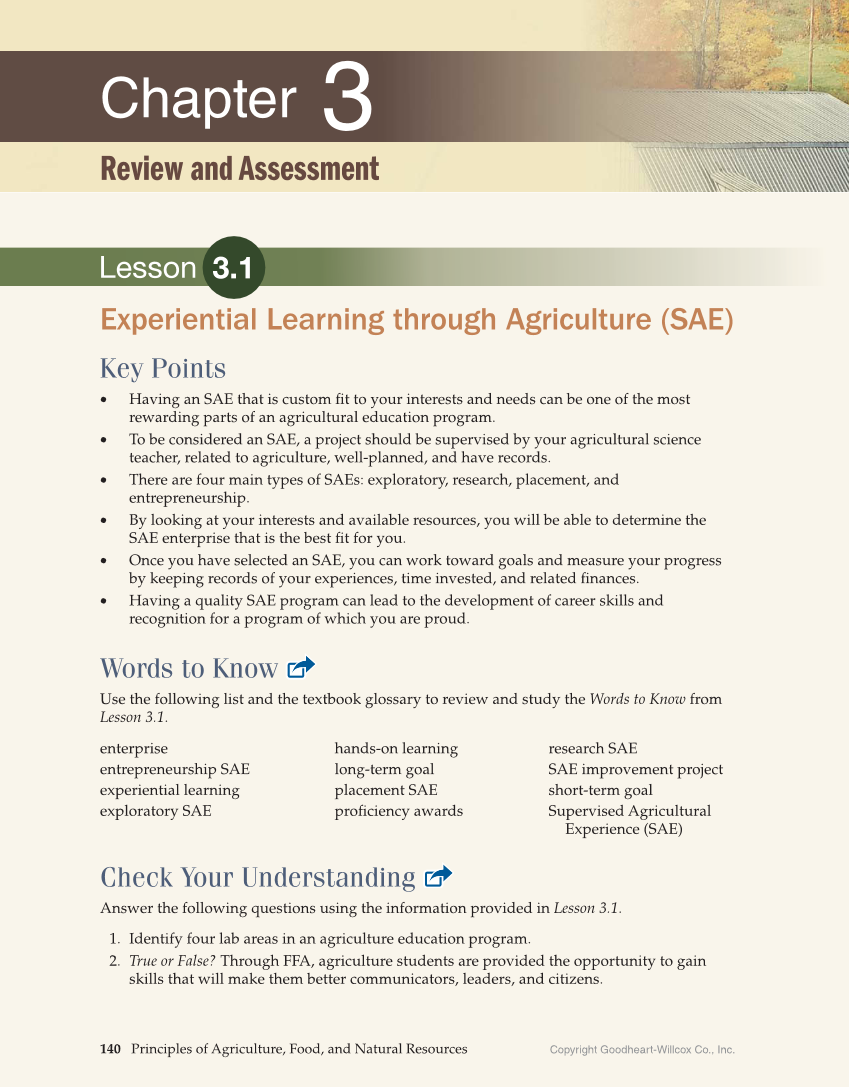140 Principles of Agriculture, Food, and Natural Resources Copyright Goodheart-Willcox Co., Inc. Key Points „ Having an SAE that is custom fit to your interests and needs can be one of the most rewarding parts of an agricultural education program. „ To be considered an SAE, a project should be supervised by your agricultural science teacher, related to agriculture, well-planned, and have records. „ There are four main types of SAEs: exploratory, research, placement, and entrepreneurship. „ By looking at your interests and available resources, you will be able to determine the SAE enterprise that is the best fit for you. „ Once you have selected an SAE, you can work toward goals and measure your progress by keeping records of your experiences, time invested, and related finances. „ Having a quality SAE program can lead to the development of career skills and recognition for a program of which you are proud. Words to Know Use the following list and the textbook glossary to review and study the Words to Know from Lesson 3.1. enterprise entrepreneurship SAE experiential learning exploratory SAE hands-on learning long-term goal placement SAE proficiency awards research SAE SAE improvement project short-term goal Supervised Agricultural Experience (SAE) Check Your Understanding Answer the following questions using the information provided in Lesson 3.1. 1. Identify four lab areas in an agriculture education program. 2. True or False? Through FFA, agriculture students are provided the opportunity to gain skills that will make them better communicators, leaders, and citizens. Chapter 3 Review and Assessment Lesson 3.1 Experiential Learning through Agriculture (SAE)
